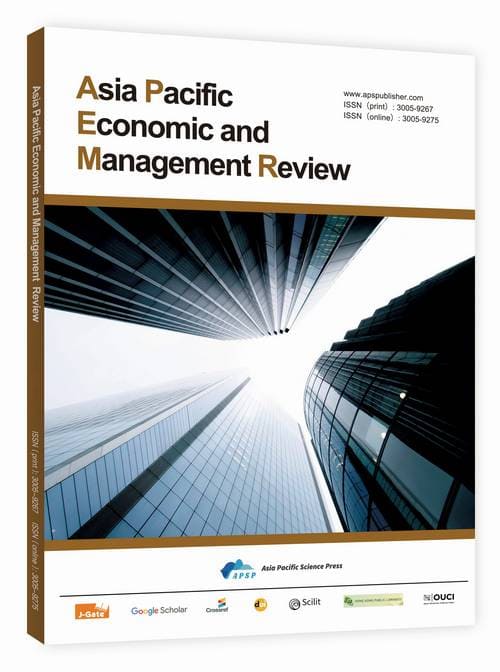Spatio-Temporal Pattern of Carbon Emission and Optimization Strategy of Emission Reduction Path in Beijing From the Perspective of Green Finance
DOI:
https://doi.org/10.62177/apemr.v2i4.494Keywords:
Green Finance, Carbon Emission, Spatial And Temporal pattern, Emission Reduction StrategyAbstract
Beijing, as the capital of China and the pioneer of low-carbon transition, faces the dual challenges of deep emission reduction and economic development. From the perspective of green finance, this study combines spatio-temporal pattern analysis and coupled coordination model to systematically explore the characteristics of Beijing's carbon emissions and the optimization strategy of emission reduction path from 2000 to 2023. The study finds that: Beijing's carbon emissions show the spatial and temporal differentiation characteristics of "high concentration in the core area and low diffusion in the remote suburban areas", the carbon center is stable in Changping District for a long time, but the emerging urban areas, such as Chaoyang and Haidian Districts, have outstanding carbon emission intensity; the coupling and coordination degree of green finance and carbon emissions shows a leaping trend of "primary to intermediate to good coordination"; and the coupling and coordination degree of green finance and carbon emissions shows a leaping trend of "primary to intermediate to good coordination". The degree of coordination of green finance and carbon emission coupling shows a trend of "primary→intermediate→good→coordinated", but there is a significant regional differentiation, with insufficient transformation momentum in the core urban areas and long-term lagging in the peri-urban industrial areas. By constructing a four-dimensional path framework of "scale effect - technology effect - structure effect - spatial effect", differentiated emission reduction strategies are proposed.
Downloads
References
Wang, L., & Li, W. (2025). A statistical test of the impact of green finance on urban carbon emissions. Statistics and Decision Making, 41(05), 155–159.
Li, Q., & Han. (2025). Carbon emission reduction effect of green financial reform and its influence mechanism. Modern Economic Discussion, (03), 62–72, 87.
Liu, W., Ji, M., Han, J., et al. (2025). Research on the intrinsic correlation of green finance, R&D input and carbon emission—An empirical test based on inter-provincial panel data. Industrial Technology and Economics, 44(03), 45–55, 161.
Zhang, Y., & Zou, G. (2024). Research on the spatial spillover effect of green financial policies on carbon emissions. Journal of Wuhan University (Philosophy and Social Science Edition), 77(05), 60–72.
Jiang, P. (2025). Temporal and spatial characteristics of the coupled coordination degree of green finance and carbon emission of tourism—The case of Yangtze River Economic Belt. Ecological Je, 1–14. Advance online publication. https://doi.org/[provide if available]
Ji, X., & Wang, S. (2025). The effect of green finance on agricultural carbon emission intensity and the test of the role mechanism. Statistics and Decision Making, 41(04), 138–143.
Li, R. J., Wang, L. L., & Wang, L. Y. (2024). How does green finance affect household consumption carbon emissions? Based on household life cycle perspective. Financial Theory and Practice, (11), 73–84.
Gu, X., & Ma, Q. (2024). Research on the threshold and spatial effect of green finance on energy structure under the goal of "double carbon". Hubei Social Science, (02), 101–109.
Wang, Y. C., Wang, X. P., & Chen, Q. Y. (2025). Review and insights of research on urban carbon emission measurement methods. Urban Planning, 49(03), 100–112.
Wang, S., Kong, W., Ren, L., et al. (2021). Misconceptions and corrections of domestic coupled coordination degree model. Journal of Natural Resources, 36(03), 793–810.
Downloads
How to Cite
Issue
Section
License
Copyright (c) 2025 Fuxing Wang

This work is licensed under a Creative Commons Attribution-NonCommercial 4.0 International License.
DATE
Accepted: 2025-07-11
Published: 2025-07-17
















